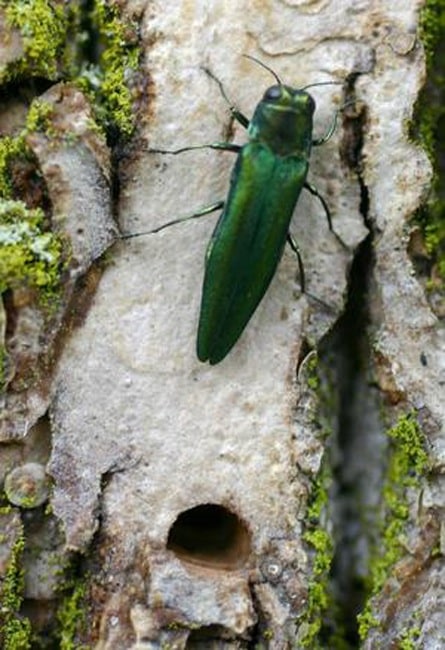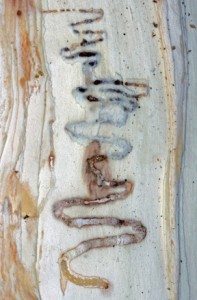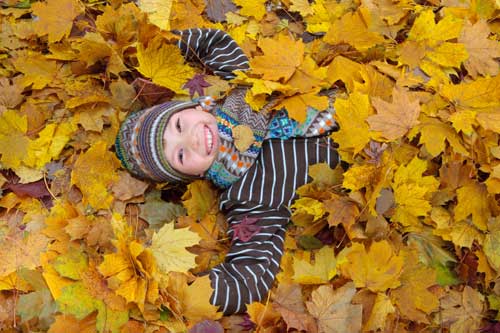Emerald Ash Borer FAQs
Emerald Ash Borer FAQs
We have assembled these FAQs to help you identify an Emerald Ash Borer infestation and to determine appropriate remediation strategies for your property that are safe for your family and pets.
Organic Plant Care is here to help you.
What you need to know
- Emerald Ash Borers only affect ash trees

The leaves of an ash tree.
- Both healthy and weakened ash trees of all sizes will be attacked
- The emerald ash borer is now one of the most destructive non-native insects in the U.S., rivaling the damage of Chestnut blight and Dutch elm disease, but EAB can be managed.
- In New Jersey, EAB infestations have been confirmed in Somerset, Bergen, Burlington, Mercer, Middlesex, and Monmouth counties. There have also been sightings in parts of Bucks county, PA. If you live within a 15-mile radius, we recommend you assess your trees immediately to determine the best course of action for your valuable ash trees before they are affected and while the population is fairly low.
How do I know if I have ash trees on my property?
- Ash trees have opposite branches and buds, not staggered. The leaves are compound, made up of 5-11 leaflets. While the bark on younger trees tends to be smooth and grey, mature trees have more of a diamond pattern of ridges and furrows.
- For further help in identifying ash trees, see: http://emeraldashborer.info/files/E2942.pdf or schedule one of our arborists to do a complimentary inspection of your trees.
How can I tell if my ash trees are affected?

- Tree crown thinning or dying back
- Shoots growing from roots and trunk
- Bark splitting creating vertical cracks
- D-shaped exit holes from EAB beetles emerging from tree
- S-shaped feeding galleries from larvae feeding under bark
- Woodpecker feeding activity increasing
What are the treatment options for EAB?
- The most effective treatment is through systemic injection of a registered pesticide into the conductive tissues of the tree where it can rapidly translocate throughout the tree. Soil drenches and injections work less quickly and can have harmful environmental impacts depending on the pesticide product used.
- Currently, research is being done in the use of biological control agents of EAB. Several species of beneficial parasitoid wasps have been identified as natural enemies of EAB in China and are now being reared and released here in the U.S. While showing success, this effort is not yet available on a scale large enough to be effective to control heavy infestations.
- For more information, see our Emerald Ash Borer (EAB) Treatment fact sheet.
When should I consider treating my ash trees?
- Since Emerald Ash Borer infestations can be difficult to detect, we advise consulting with a knowledgeable tree expert in your area. Prevention, prior to symptoms becoming visible, is the optimum method for keeping your trees from dying. The effectiveness of treatment may be compromised in heavily infested trees with greater than 30% crown thinning and/or dieback. Treatments should be timed with the emergence of adult EAB beetles in early May through the end of August. Summer treatments are best applied in the morning when temperatures are moderate and vascular uptake is greater.
- Do Not Delay – have your ash trees assessed by a qualified tree expert as soon as possible. Prophylactic treatment is the best option to protect your ash trees.
What is TreeAzin® and how does it work?
 TreeAzin is a systemic insecticide injected directly into the base of trees. It’s produced from an extract of Neem tree seeds called azadirachtin, known for centuries to control insects. TreeAzin is not neem oil, although it works similarly by regulating growth and disrupting normal molting. Azadirachtin has also been shown to reduce fertility and egg viability when adult females feed on a treated tree’s foliage.
TreeAzin is a systemic insecticide injected directly into the base of trees. It’s produced from an extract of Neem tree seeds called azadirachtin, known for centuries to control insects. TreeAzin is not neem oil, although it works similarly by regulating growth and disrupting normal molting. Azadirachtin has also been shown to reduce fertility and egg viability when adult females feed on a treated tree’s foliage.- 95% of EAB larvae feeding on treated tree tissues do not complete development and die. Adult female EAB beetles that feed on treated tree leaves lay significantly fewer eggs. Less than 1% of eggs that are laid are viable. In the year following treatment, EAB larvae hatched from viable eggs do not complete development.
How much will it cost to treat my ash trees?
- Treatment costs depend on the size, location and degree of insect infestation of the tree. If located within 15 miles of a confirmed infestation, the maximum dosage rate should be used, or if outside 15 miles with suspicious EAB symptoms.
- To be effective, systemic injection treatment for EAB should be conducted every two years while populations persist…usually for about a 6-10 year period. In general, the cost for systemic injection runs about $10 per diameter inch (measured at breast height). Usually done every two years, treatment is often less than the cost of removing, disposing and replanting. Ash trees, that are struggling or in poor health, are not likely to respond as well to treatments. We can help you compare the costs and benefits of treatment versus removal.
Is it safe for a child to play in the leaves from a treated tree? Can I compost leaves from a treated tree and use them in my garden?

- Essentially all of the active ingredients in the azadirachtin-based product that we use has dissipated from the leaf tissue before leaf-shed in the fall. It is safe for a child to play in the leaves, or for leaves to be composted and used in a garden. TreeAzin® is OMRI-listed in the U.S. and, unlike other pesticides approved for EAB, poses minimal risk to applicators, families, pets, bees, birds, mammals and soil & aquatic ecosystems.
- Other products registered and recommended for treatment for emerald ash borer, like imidacloprid, have been shown to be highly toxic to aquatic invertebrates and to have adverse environmental effects on non-target decomposer soil organisms when leaves fall to the forest floor or adjacent water bodies. According to studies in the U.S. and Canada, azadirachtin is the safest injectable insecticide shown to be effective in controlling EAB and extending the life of ash trees.
Can I treat my trees myself?
- TreeAzin may only be applied by professionally licensed pesticide applicators. While there are homeowner treatment options for small ash trees, these require careful application to avoid unintended environmental impacts. Products can leach into groundwater and some products are highly toxic to pollinators and aquatic invertebrates. In general, we recommend having ash trees that are larger than 12-14 inches in diameter (as measured 4.5 feet from the ground) treated by a professional.
What happens if I do nothing?
- Now that EAB has been detected within Somerset County, NJ, untreated ash trees will eventually become infested and die. Large trees located near buildings or active use areas can become a safety hazard and need to be removed. Homeowners are responsible for managing the trees on their property and dealing with any hazards effectively.
Are dead ash trees dangerous? Should I remove it?
- Dead ash trees are extremely dangerous and should be removed ASAP. Better yet, remove any infested trees pre-emptively, before they become unstable and dangerous. You can learn more about removing dead ash trees here.
How can I prevent the spread of Emerald Ash Borer?
- EAB adults can fly at least ½ mile from where they emerge. New infestations are often started when people move infested firewood, logs, or ash nursery trees into un-infested areas. Transporting firewood outside of quarantined areas is illegal. Please do not move firewood or logs outside of a quarantined area.
- If you live less than 15 miles from a known EAB infestation, or, greater than 15 miles but notice suspicious symptoms, have your important ash trees evaluated by a qualified tree expert immediately.
- Call us today at 908.309.6611 to schedule a complimentary assessment of the trees on your property or contact us here.
Where can I get more information?
- For more information about Emerald Ash Borer visit: http://emeraldashborer.info/index.cfm#sthash.chC4qqIG.dpbs
Call us today at 908.309.6611 to schedule a complimentary assessment of the trees on your property or contact us here.
